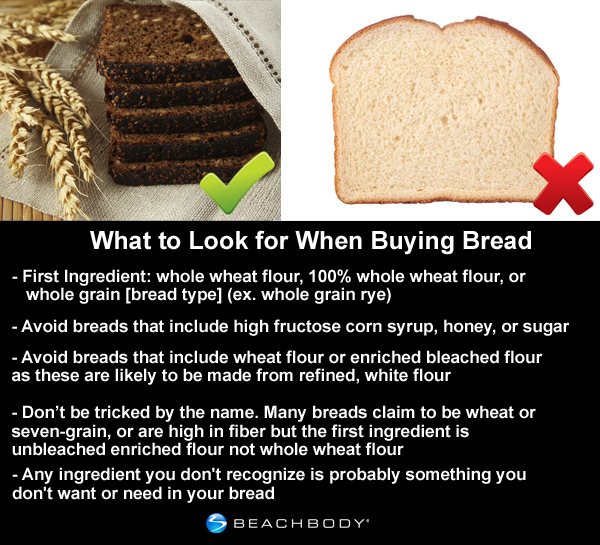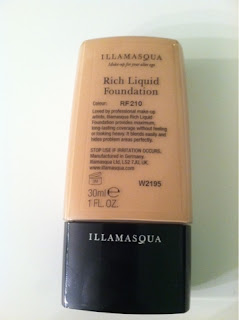Health - Not All Carbs Are Created Equal
Another
question I get asked a lot by clients - Can I eat carbs if I want to lose
weight? Here is a great article from Beachbody.com that explains why
certain carbs are good for you. Enjoy...
There’s Nothing Wrong with Bread
Be honest. You
love bread. Everybody loves bread.
However, for a
number of reasons, many people are avoiding bread and other wheat products
completely these days. While I’ll concede that many folks consume a bit too
much starch, bread is actually a delicious and nutritious food that deserves a
place in most of our diets.
One Important
Caveat
There’s a lot of
things labeled as bread at the market and unfortunately, as is often the case
with food, all of these products are not created equally. The bread that I’m
promoting up here on my soapbox, is handmade using traditional fermentation
methods and is often composed of a variety of fresh-milled whole grains and
seeds. Simply put—and I know this label can be nebulous as well, I’m standing
up for artisan bread products baked with quality ingredients, not
commercially-produced mass market products that are delivered to shelves
without many of the benefits outlined below.
The Gluten
Scare
We all know there
is no “one-size-fits-all” diet out there and not every body digests gluten very
well. In fact, some digestive tracts are quite sensitive to gluten, sounding
the alarms with a number of autoimmune reactions upon its consumption. Celiac disease is a very real thing and
I am by no means suggesting that those suffering from this begin to consume
foods that contain gluten. However, true celiac disease is quite rare and
because of some very clever marketing and “hype” many people have chosen to go
“gluten free,” perhaps, unnecessarily. My sense is that going gluten free feels
better mainly because oftentimes folks are transitioning away from a standard
American diet that is packed full of high fat, starchy foods, thus replacing
gluten containing products with more fruits, vegetables, legumes and quality
proteins, which will of course vastly improve the way one feels. Whatever the
case, for those that feel healthy and satisfied without artisan bread and other
gluten containing foods, keep doing what you’re doing. You know your body best!
However, those curious about the potential of integrating some crusty, chewy,
delicious bread back into their diet may find this information useful.
A Fermented
Food
Your average
sliced bread found on the grocery shelves is a quick-yeasted bread that uses
refined yeast that raises dough incredibly fast. This process is efficient,
allowing for more bread production in a shorter amount of time. Unfortunately,
the faster process leads to inferior nutrition.
Historically,
bread is produced through a fermentation process known as souring. By
inoculating dough with a culture, bacteria begin to digest the raw ingredients.
The byproduct of this process is carbon dioxide and lactic acid. The former
being the air bubbles that cause dough to rise and the latter contributing a
somewhat sour flavor. Beyond its contributions to texture and flavor, souring
breaks down bran and predigests many of the carbohydrates and proteins found in
wheat, which has been shown to naturally
reduce gluten levels present in the final product. Enzymes
also develop during the fermentation process that often remain active even
after baking. Artisans bake at high heat for short durations (like a properly
prepared steak) to create a product with a crunchy crust and chewy interior,
and that chewy interior does not get hot enough to deactivate enzymatic
activity. Mark Sircus describes all of this in depth in his article “Sour Dough Bread and Health.”
Simply put, the natural fermentation process that sours artisan bread creates a
final product that is far easier to digest, thus the body can assimilate more
nutrition without aggravating the intestinal tract.
Whole-Grain
Nutrition
While many
artisan bread products integrate a variety of grains into recipes, wheat flour
is almost always the main ingredient in bread. Most understand the benefits of
eating whole-grain wheat flour over standard white flour. White flour products
are created by sifting out brand and germ from the processed wheat, which makes
the flour easier to work with, but also robs most of its potential nutrition. However, as bakers rediscover traditional
techniques along with wheat varieties that lend themselves to whole grain baking,
some incredible whole grain breads
are being created.
Those that can
source fresh baked whole grain bread from a local bakery are in luck. Turns out
they’re getting a lot of more than a “carb fix” from these products. Whole wheat actually contains quite a
bit of nutrition, including a substantial amount of B
vitamins, manganese, magnesium and phosphorus. Of course, with the bran
left in the flour, there is also a hefty dose of dietary fiber available in
whole wheat.
The Middle
Path
See? Bread ain’t
so bad after all! The rub here is the same as it usually is though. Those that
seek out a handmade product using high-quality ingredients will enjoy something
equally delicious and nutritious. Additionally, remember that you can have too
much of a good thing, so do enjoy bread as a part of a balanced diet. See how
you feel. You may just rediscover an old friend.




Comments
Post a Comment